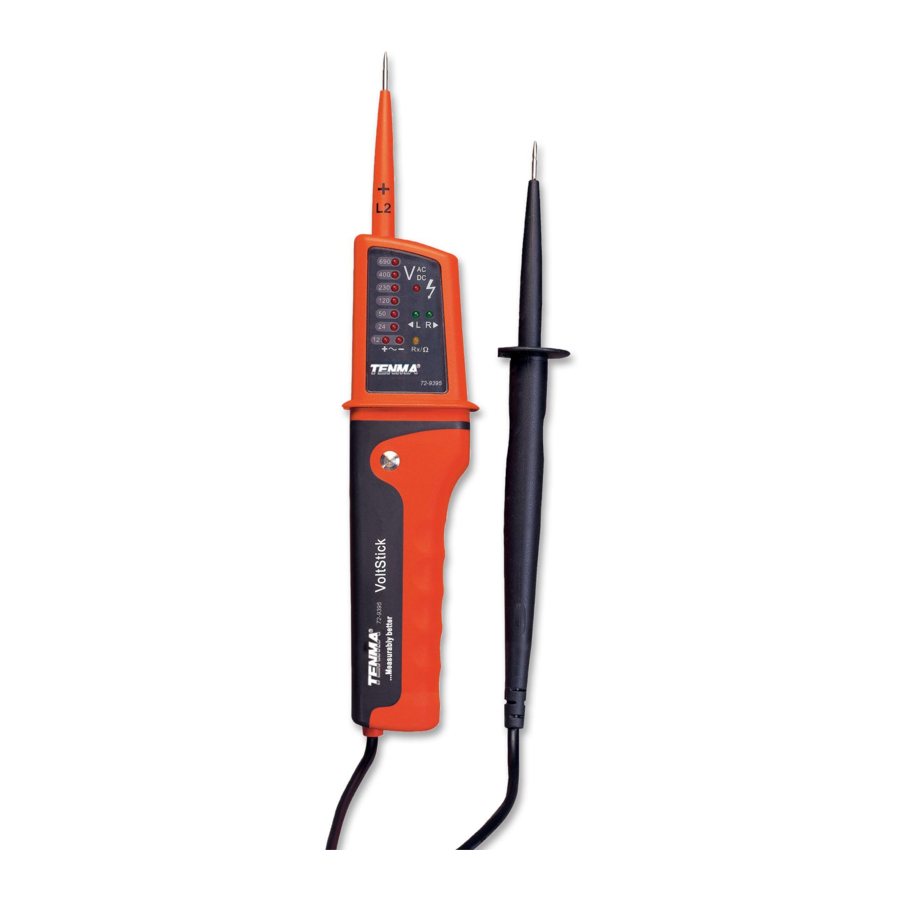
Table of Contents
Advertisement
Quick Links
Advertisement
Table of Contents

Summary of Contents for Tenma 72-9395
- Page 1 Voltage and Continuity Tester Model: 72-9395...
- Page 2 IMPORTANT SAFETY INFORMATION Please read these instructions carefully before use and retain for future reference. Failure to read the instruction manual or comply with warnings and references within can result in serious bodily injury or damage to instrument. This instrument is designed and manufactured in compliance with: CAT IV 600V double insulation conforms to EU standards: EN61010-1/EN61010-031/EN61326.
- Page 3 FUNCTIONS Test probe + Ground probe LED work light LED voltage display Polarity indicator Contact electrode Single pole phase LED LED for L/R rotary field Continuity LED 10. Work light button (far side) 11. Battery location OPERATION Function/self test • Test the voltage tester on a known source before use.
- Page 4 Single Pole Phase Test • When carrying out single-pole phase test, touch the contact electrode (6) and connect the instrument + test probe to the unknown source. Note: gloves or other protective clothing may impair this function by preventing connection to the contact electrode. •...
- Page 5 Work Illumination • This instrument is equipped with a work space illumination feature which makes working under low lighting conditions easier. • Press button (10) to turn on the light. BATTERY REPLACEMENT Warning: Only replace the battery after the test leads are disconnected from the circuit under test.
- Page 6 SPECIFICATIONS Function Range/description Voltage range Up to 690V Resolution ±12, 24, 120, 230, 400, 690V Voltage detection Automatic Acoustic signal Polarity detection Full range Range detection Automatic Response time <0.1S Frequency range 0~400Hz Internal basic load Approx 2.5W @ 690V Peak current Is<0.3A/Is (after 5s)<3.5mA Operation time...
- Page 8 INFORMATION ON WASTE DISPOSAL FOR CONSUMERS OF ELECTRICAL & ELECTRONIC EQUIPMENT These symbols indicate that separate collection of Waste Electrical and Electronic Equipment (WEEE) or waste batteries is required. Do not dispose of these items with general household waste. Separate for the treatment, recovery and recycling of the materials used. Waste batteries can be returned to any waste battery recycling point which are provided by most battery retailers.
















Need help?
Do you have a question about the 72-9395 and is the answer not in the manual?
Questions and answers